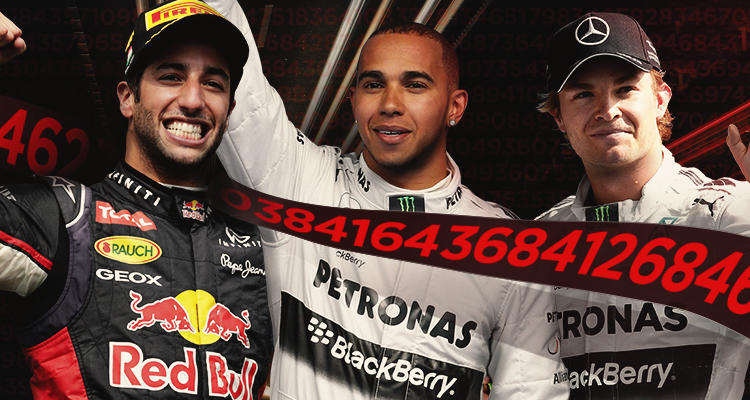Bets using Monte Carlos simulation
What figures do you use to manage the bets? The Monte Carlo simulator is an excellent tool to guild your bets.

There are different ways of numerically resolving a real-life problem; however, we generally accustomed to a conventional method-a process. A function is a relationship between a set of inputs and permissible outputs with the value of precisely one output linked to each data.
As an example, estimating the probability, Lewis Hamilton will win the Japanese Grand Prix. The way to do this is to create a function using input parameters influencing the output (such as the result of the last game, etc.). Football can also use a similar strategy, which usually uses each team’s goal levels Poisson evaluation.
But what if bettors want to quantify Hamilton’s chances of winning the 2014 Formula 1 season? The results for this question are much more complicated, and a simple function can’t solve them. It is where you can use the mathematical models.
Deterministic variables
For the deterministic variable, the function output is determined by the values of the parameters and the primary conditions. To evaluate the chance for Hamilton to win the season requires a more mathematical/sophisticated approach.
Stochastic variables
To simulate the outcomes of the remaining 5 Grand Prix- Russia, Japan, Abu Dhabi, Brazil & US – through a simulation of Monte Carlo, which is a method that uses randomly generated numbers to estimate the outcome. The Stochastic variables have several random variables-rather than just one function-and need several results to obtained.
At the moment, Hamilton has the highest point in the 2014 F1 championship following by Nico Rosberg and Daniel Ricciardo. Hamilton has a 60 points lead away fro Daniel Ricciardo.
Valtteri Bottas ranked on sixth-placed still have the chance to win as there are still 150 points for grabs, as each race’s winner gets 25 points, and the last race counts double points. For the sake of consistency, we should conclude that even the top three get a fair shot to win the championship.
Therefore, Bettors can simulate all top ten positions, and drivers receive points from, but we’ll only simulate the winner and the runner-up for this post.
If either of the 3 drivers fails to finish in the top two, we’ll say they’d get six points, which is similar to the average points he’d scored if he crossed the checked line from third (15 points) and eleventh (0 points).
We assume that the 3 drivers will get 6 average points as he crossed the checked line from 3rd (15 points) & 11th (0 points) if any of them fall out from the top two. Example below:

Rosberg, Hamilton, and Ricciardo have won 4, 7, and 3 out of the 14 Grand Prix held in 2014 to date. For the drivers Rosberg: Hamilton: Ricciardo: Others, we may also use the force ratio 4:7:3:1.
In this case, for each race, we have 13 potential outcomes (noted as A to M). For example, in the result, I see Ricciardo winning the race – in the table below – while a driver other than the Mercedes team gets second place. Ricciardo’s probability of winning the race is 3/15 as the ratio is 4:7:3:1 while the likelihood of neither Hamilton or Rosberg finishing second is 1/12, as the ratio will now exclude Ricciardo and his 4:7:1.
Hence Ricciardo’s chance of receiving 25-points while the other two earning 6 points each is 3/15 * 1/12 = 1/60. The probability of each outcome is shown in the table below, as is the combined quantities.
Outcome Probabilities
| Path | A | B | C | D | E | F | G | H | I | J | K | L | M |
| Rosberg | 25 | 25 | 25 | 18 | 6 | 6 | 18 | 6 | 6 | 18 | 6 | 6 | 6 |
| Hamilton | 18 | 6 | 6 | 25 | 25 | 25 | 6 | 18 | 6 | 6 | 18 | 6 | 6 |
| Ricciardo | 6 | 18 | 6 | 6 | 18 | 6 | 25 | 25 | 25 | 6 | 6 | 18 | 6 |
| Probability(%) | 17 | 7.30 | 2.40 | 23.30 | 17.50 | 5.80 | 6.70 | 11.70 | 1.70 | 1.80 | 3.10 | 1.30 | 0.40 |
| Cumulative
Probability(%) |
17 | 24.20 | 26.70 | 50.00 | 67.5 | 73.30 | 80 | 91.70 | 93.30 | 95.1 | 98.20 | 99.6 | 100 |
Now, the cumulative values can be used to estimate the results. Five races are remaining, so let’s produce five random numbers between zero and one by using rand () in Excel.
We use the table to estimate the points which these 3 drivers receive for each value. For instance, if the first random number is 0.4215, which ranges from 26.7% ˜ 50.0%, we will simulate result D for the next race in Japan-1st Hamilton, 2nd Rosberg.
In each simulation, the points earned in the five simulated races are added to the existing drivers’ world championship points. Therefore, the winner is the driver with the most points.
For a large number of simulations, you can repeat this process to ensure data is not negligible as a result of the limited sample sizes. For instance, if Hamilton wins 4,000 times out of 10,000 simulations, his chances of winning the championship are 0.4 or 40%.
Dynamic Variables
For this example, the strength ratio will change after simulation of each race, and the data will factor in certain variables such as the car set-up, momentum, drivers form, and more.
For illustration, if the figure assumed Hamilton to win the Japanese GP, there might be a momentum factor in the framework for Russia’s next race. Thus the intensity ratio will shift for the Russian GP to 4:8:3:1.
Conclusion
As conclusion, a mathematical statistic has three main stages: deterministic, stochastic, and dynamic. The higher the stage, the greater the need for technical knowledge. For the latter two, the Monte Carlo simulations can be used with the main difference being that the model learns in a dynamic setting from its own simulations.
Ultimately, the probability-based model does not provide a reliable answer like your “good guess” Rather, the answer to the question is itself a distribution of probability, which tells you the range of possible outcomes and their relative possibility.
Nevertheless, Monte Carlo has drawbacks close to other versions. Given that the data is dependent on variables to be inserted into the method, bettors need to ensure that the information is correct to prevent the scenario of “garbage in, garbage out.” It can all be blamed for the critical assumptions made here. For instance:
The strength ratio does not recognize that for specific racing circuits and temperatures better suited for different drivers and cars.
The 6 points awarded are not fair, as this means that each of these three drivers will earn points from each race.
Ideally, the outcomes evaluated for responsiveness to these assumptions. It only takes inadequate information to distort the equation, which is why you can use Monte Carlo models adjacent to a balanced betting strategy and don’t rely solely on them.





